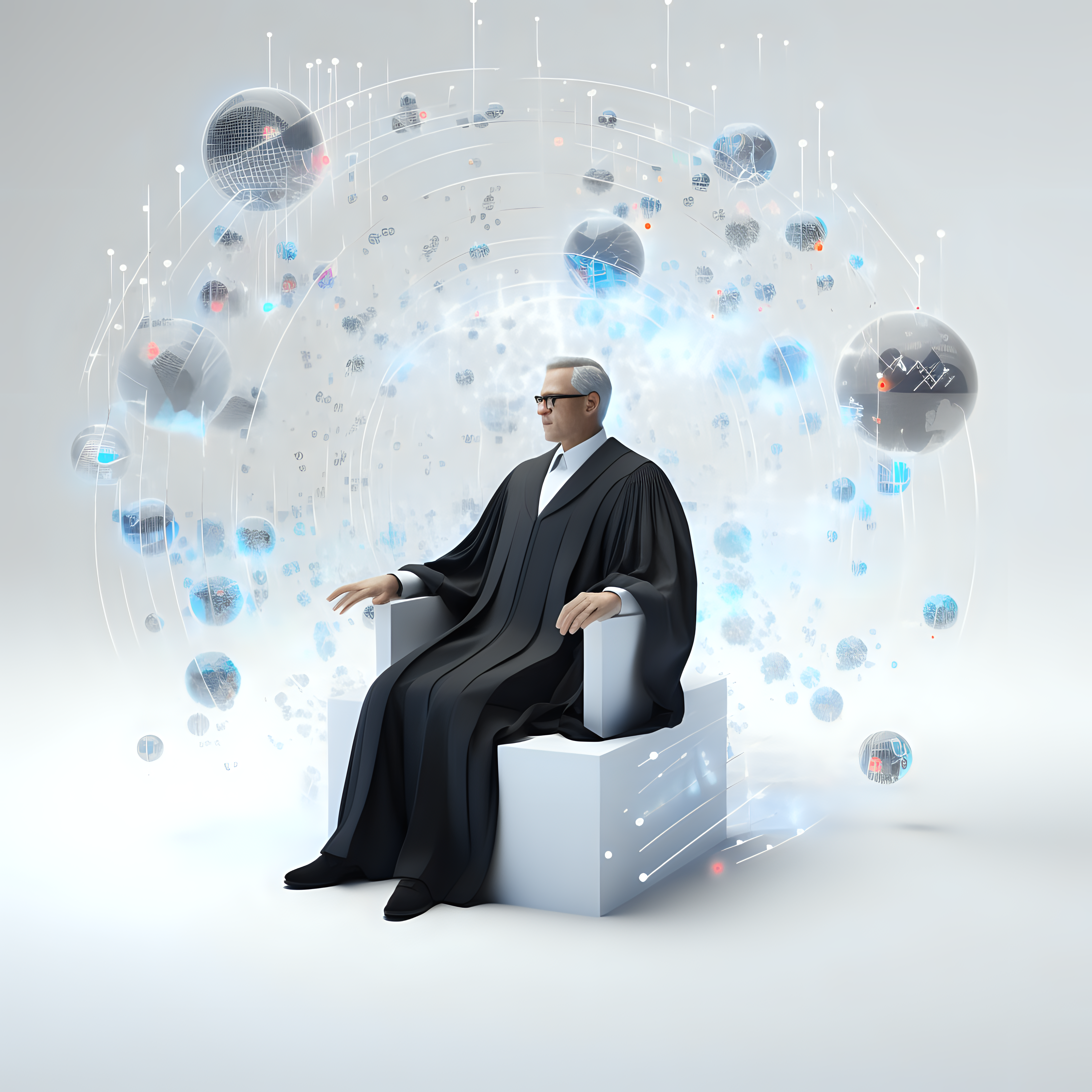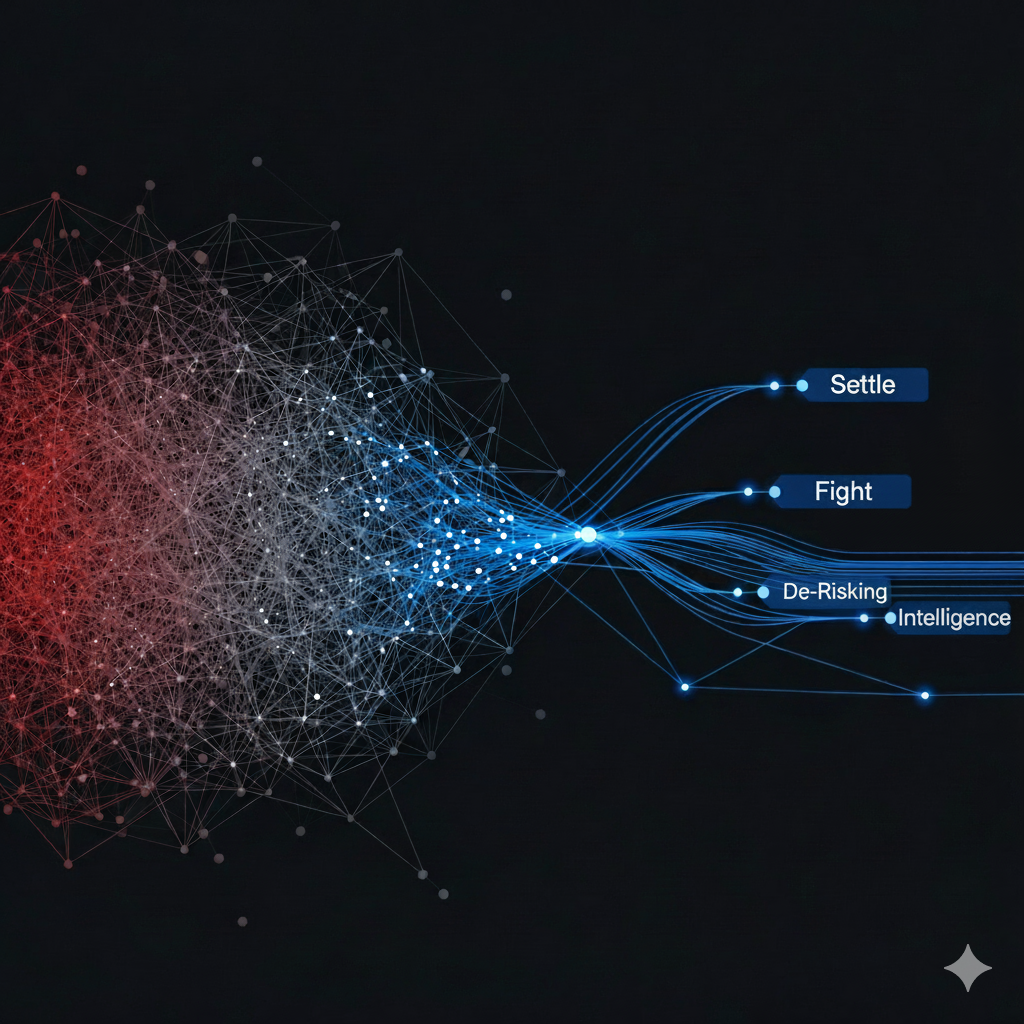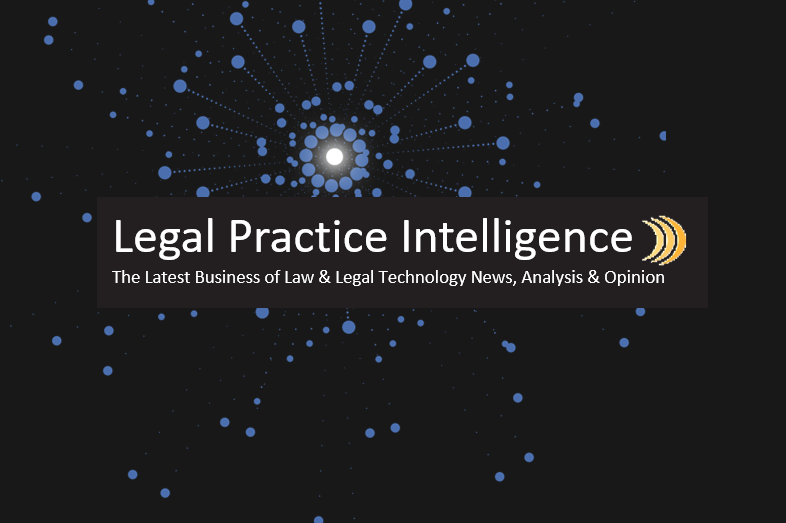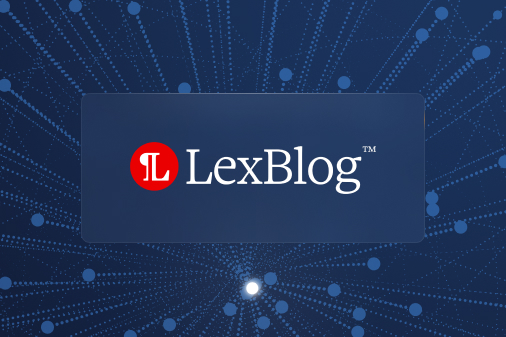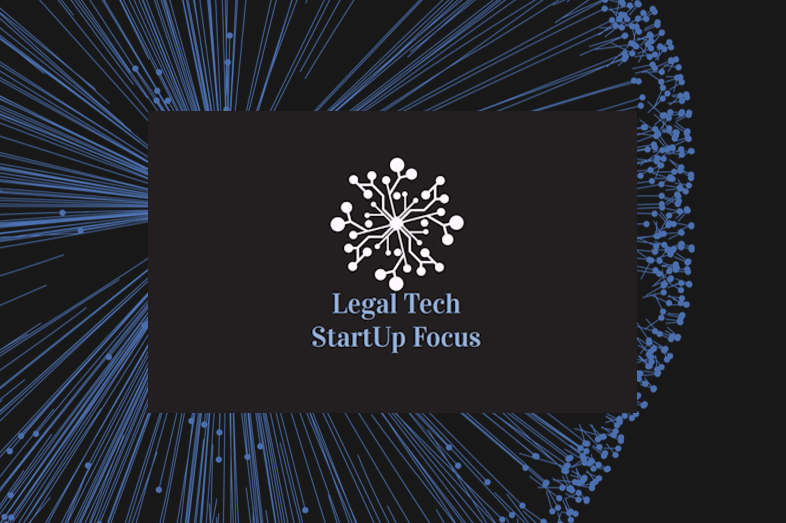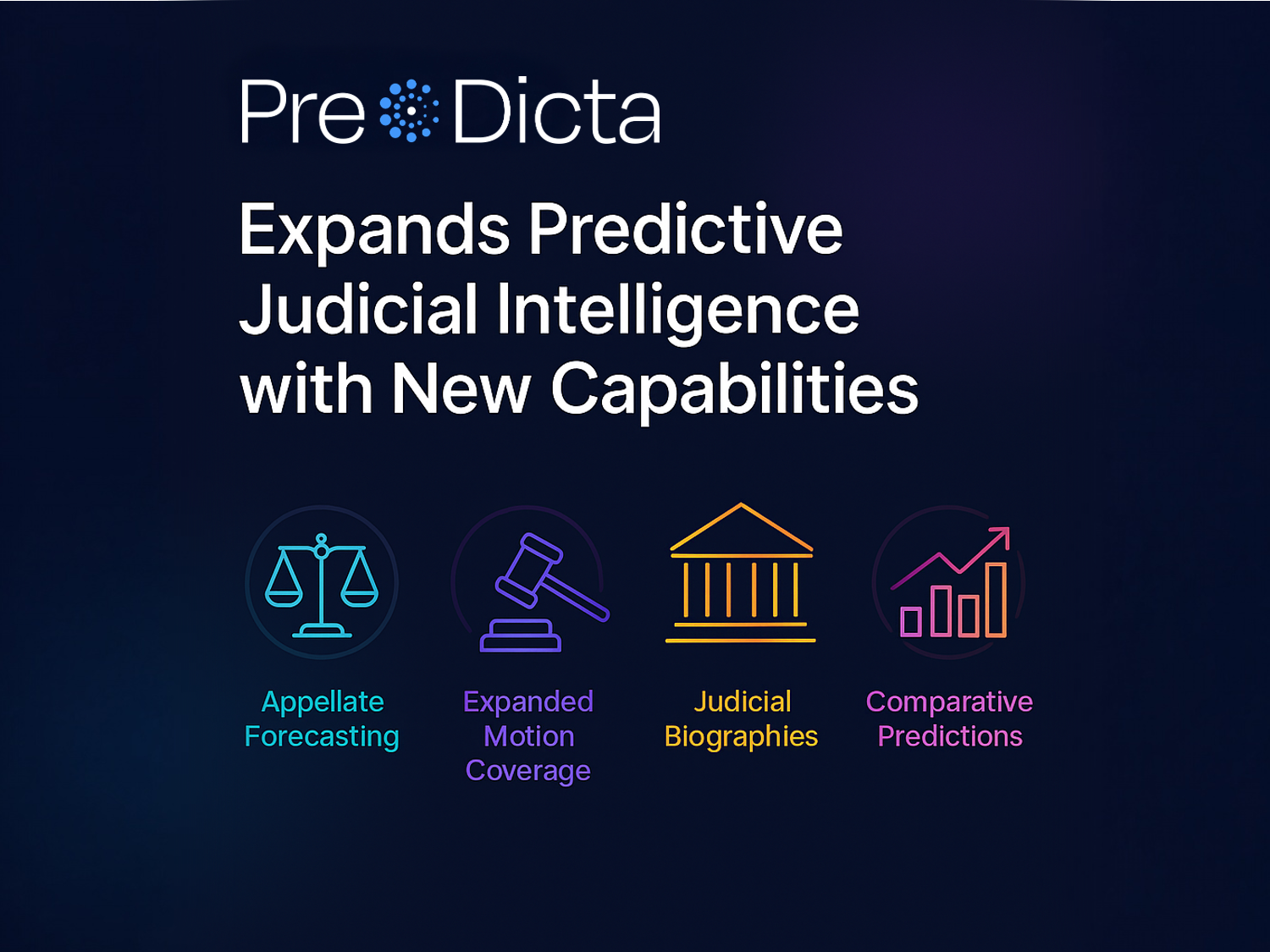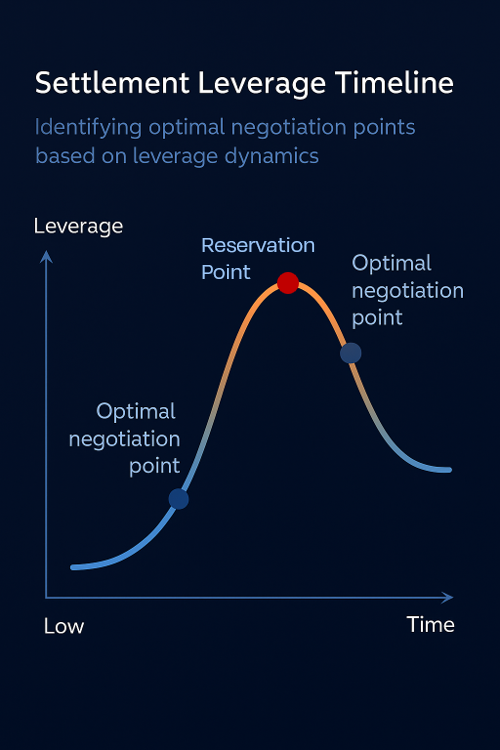Podcast: The Voices of the Internet of Things with Chuck Martin: Dan Rabinowitz, Predicta

Chuck Martin is a New York Times Business Bestselling author and futurist with over two decades of leadership in emerging digital technologies. Recognized as a top IoT thinker globally, Martin hosts the podcast “The Voices of the Internet of Things” and has written extensively on digital transformation and IoT. He is the head of the Net Future Institute, a think tank exploring disruptive business strategies, and has held notable positions such as Vice President at IBM and Associate Publisher of Information Week.
Chuck Martin’s deep expertise in digital disruption, AI, and IoT makes him an excellent choice to interview Dan Rabinowitz, former Amlaw attorney and founder of PRE/DICTA. His understanding of the intersection between technology and business, combined with his experience in predicting future technological impacts, positions him well to delve into the innovative legal analytics and AI-driven insights that PRE/DICTA offers.
Podcast Summary
In this insightful interview, Chuck Martin discusses with Dan Rabinowitz, the founder of PRE/DICTA, about the revolutionary impact of AI on legal predictions. PRE/DICTA’s advanced AI technology predicts judicial outcomes with an impressive 85% accuracy, offering a significant advantage to law firms and corporations. By analyzing vast datasets and considering various biographical and historical factors of judges, PRE/DICTA provides valuable insights that can guide legal strategies, venue selections, and more. This AI-driven approach enhances the ability of firms to make data-backed decisions, placing it on par with leading legal analytics platforms like those used in practical law and case management.
As legal analytics continue to evolve, PRE/DICTA stands out as a game-changer for the industry. The integration of AI in law brings unprecedented precision to predicting case outcomes, rivaling established systems like Westlaw, LexisNexis, and Bloomberg Law. By focusing on the intersection of technology and legal practice, PRE/DICTA not only improves litigation strategies but also sets a new standard for the future of legal AI. This transformative approach is essential for legal professionals seeking to stay ahead in a rapidly advancing field.
- Predicting judge decisions using AI, focusing on individual judge preferences and past decisions. 0:00
- Predictor CEO Dan Rabinowitz explains how AI predicts judge decisions based on individual human nature.
- Judges’ decisions influenced by parties and attorneys, not specific individuals.
- Predicting court outcomes using machine learning and AI. 3:36
- The system analyzes judges’ decisions and biographies to predict their rulings with high accuracy.
- The system uses machine learning and AI to enrich data and identify patterns in judicial decisions.
- Speaker 2 explains different types of motions in a lawsuit, including motion to dismiss and summary judgment.
- Predictive technology can provide binary predictions for motion outcomes, with a threshold for grant or denial.
- Attorneys can use technology to advise clients on their chances of success and strategize for the rest of the case.
- Using AI to predict court outcomes based on judge characteristics. 9:01
- Speaker 2 discusses using predictive technology to analyze judges’ likelihood of granting motions, even before cases are filed.
- Speaker 2 shares a success story of using technology to transfer venue and have a motion to dismiss granted in a case with 10s of millions of dollars at issue.
- Speaker 2 explains how their company’s predictive technology uses data analytics to determine court outcomes with 85% accuracy.
- Speaker 2 discusses the importance of characteristics and past activities in making predictive determinations.
- Predicting judges’ decisions using data analysis. 14:34
- Speaker 2 explains how AI predicts judge decisions with 87% accuracy.
- Speaker 2 explains that technology has advanced to the point where accurate predictions can be made, but human factors like a bad night’s sleep or cranky kids can still affect judicial decisions.
- Speaker 2 highlights the importance of analyzing decisional patterns to identify judges who are consistently outside the norm, as this can indicate a lack of normal decision-making processes.
- Using AI to predict judge decisions based on biographical data. 18:19
- Speaker 2 explains how their approach uses biographical information and matching with experienced judges to predict future decisions (85% accuracy).
- Speaker 2 highlights the human aspect of the justice system, acknowledging variations and using them to create predictions (not AI or robotic).
- Speaker 2: Law firms using predictive tech for mergers, litigation funding.
- Speaker 1: Industry slow to adopt, but clients demand data-driven decisions.
- Using AI to predict court outcomes based on judge and law firm data. 23:22
- Speaker 2 highlights the limitations of relying on human intuition in predicting court outcomes, citing a 85% accuracy rate for their technology in predicting dismissal outcomes.
- The speaker notes that a sophisticated plaintiff firm had 11 cases dismissed despite their vetting process, demonstrating the potential value of using technology to identify more favorable jurisdictions for filing.
- Speaker 2 explains how AI can analyze law firms’ past performance and predict their success in future cases.
- Panel counseling is a common practice in corporate legal departments, where a list of pre-approved law firms are selected for various matters.
SUMMARY KEYWORDS
judge, motion, technology, case, plaintiff, attorneys, dismiss, decisions, predict, file, law, grant, facts, ultimately, predictions, firm, predictive, based, determine, biography
SPEAKERS
Dan Rabinowitz, Chuck Martin
Chuck Martin 00:00
Hello, I’m Chuck Martin, and welcome to the voices of the Internet of Things. With me today is Dan Rabinowitz, CEO and founder of predictor. Dan has been a trial attorney at the US Department of Justice, Associate General Counsel at Booz Allen Hamilton, and CEO of deco cocktails. At predictor, Dan focuses on using artificial intelligence to predict the outcomes of federal losses. Welcome here, Dan.
Dan Rabinowitz 00:24
Thank you.
Chuck Martin 00:26
So tell me, we’re here because I’m just so intrigued about what you do. Talking about a vertical market. Tell me about what predicted does?
Dan Rabinowitz 00:34
Sure. So predict a starts if you were where traditional legal research and writing ends. So lawyers, when they’re faced with a case, do research on the on the case law on the precedent, to deep dive into the facts, and then try to craft arguments and come up with strategies based upon those two large buckets, if you will. But ultimately, they are not going to be the ones deciding whether or not their arguments have merit, or, or how, you know, how convincing they are on the other side of that is a judge in a very particular judge. And what our analysis has determined is, is that those judges decisions are variables. That is they are highly individualized, each judge might arrive at a different decision, despite the fact that the facts of the law are exactly the same. So the way to account for that difference between individuals is, if you will, human nature, all of us are affected by a number of things. And we react in different ways to any any, any number of things that we come in contact with. And to go back to what we’ve studied, our studies have borne out that the things that ultimately, most persuade or most influence judges are the actors involved in the case, that is the parties and the attorneys. And those will ultimately determine what how the judge will be explained what I mean by attorneys and parties. I don’t mean the specific attorney and the specific party. Instead, we’re looking at classes of attorneys and classes of parties. So let’s take for example, Bayer pharmaceuticals. So Bayer Pharmaceuticals is not specifically Bayer pharmaceuticals. Bayer is a pharmaceutical and medical device company that’s international that’s listed on the stock exchange, and so on and so forth. And it’s those types of companies that we would look for similarities between and similarly when it comes to attorneys, are they from a large firm, a small firm? How do we classify those firms? Where are they located geographically. So what we did was we took a hard look at what judges have done in the past. Now, there are two ways that judges decisions are recorded. The way I think that most people are most familiar with it is opinions. That is a written decision by the judge that explains the rationale as to why they arrived at that particular conclusion. Judges draft opinions in fewer than 2% of cases that they have motions before them. So it’s a very, very small data set, and doesn’t really tell you much about how the judge is going to roll in your case, the other 98%, or percent of the decisions are recorded only as granton’s in Iowa hereby grant your motion, and I hereby deny your motion. So that information by itself is not very meaningful. Because if the judge grants, let’s say, for example, 70% of the motions, that, of course, does not mean you have a 70% chance of your motion to be granted. Right? Past performance, as we’re all aware, we’re from any stock offering is not indicative of future results. Right. So, so what we did with those naked grants and Denyse, we wanted to understand the circumstances in those grants and denials. So again, was it a pharmaceutical company that’s publicly traded or privately held? is an international? Or is it based in the US? How large is the company and so on and so forth? And then we want to understand who is on the other side? Is it an individual on the other side? Or is it a similar Corporation of pharmaceutical medical device, who were they represented by instead of Big Pharma or small firm is that a solo practitioner is the plainest term. And once we enrich the data with that, we were able to then utilize a machine learning to process it as well as AI to understand it to see patterns within those decisions. So it’s no longer a grant or denial. Now, it’s a grant or denial, with a whole host of other factors attached to it. So that was one piece of the puzzle. But the other piece of the puzzle is to understand who the judge is. So the way that we understand who the judge is, is they’ll be looking at their biography and their experience. So the obvious ones would be, you know, where they work where they in private practice and public service where they a state court judge, before being elevated to the federal bench, where they went to law school, but then we start doing deeper dives, for example, where they went to undergrad to political affiliation, how much what is their net worth, geography and so on and so forth. And we develop dozens of different characteristics that we apply to each judge and by marrying those Historic decisions with the biography, we are then able to predict with a high degree of accuracy what that judge is going to do, based on the specific circumstances in your case, meaning again, who the actors are. And then with that information, we can simply tell you how the judge will, will rule. So
Chuck Martin 05:17
how do you how do you, that sounds like the subjective aspects of factual things?
Dan Rabinowitz 05:24
Well, that’s exactly right. It is subjective to some degree. But that doesn’t mean it’s not quantifiable. So it is subjective, that the individual will ultimately come out different based on their their particular propensities. But with enough data and the correct approach, you’re able to look at and predict how that person will react to those factors.
Chuck Martin 05:44
So do you what do you end up with? Do you end up with a probability of if we have this judgment, we have this percentage that have this outcome, or something different than that.
Dan Rabinowitz 05:53
So it depends on which type of motion that we’re talking about. So first, let me just make sure that we’re all on the same page as it relates to what judges do. So judges, for the most part, are there to determine the law, they’re not there to determine fact, the jury is there to determine in fact, and the jury is not there to determine if it’s a legal question, the judge decides it. If it’s a factual question, then the jury gets to decide which presentation of the facts is most compelling. So what we’re talking about are those legal questions that come before judges, and those are in a variety of different types of motions. So at various points in the case, you can file various types of motion, once a complaint is filed, that is, once a case is kicked off, the first type of motion that you can file is called a motion to dismiss, can make a variety of arguments why the case should be dismissed immediately without proceeding to discovery. Discovery is of course, the phase where you have all the things you see on TV, the depositions looking at millions of documents, and so on and so forth. And of course, if you can kill the case before that, that that’s a, that’s a huge win. If however, on the plaintiff side, if you can survive a motion to dismiss, and then get to discovery. A lot of times now you’re talking about some form of settlement, whether it’s, you know, the exact type that you want, but at least now there’s a chance of settlement or some payout, because ultimately, only less than 2% of cases actually proceed all the way to trial. So most of the most of those will be decided during the discovery phase. And during the discovery phase, there’s different types of motions, that you can file, some similar to a motion to dismiss, which is called summary judgment, which can also totally get rid of the case. And then there are others, like, for example, motions to compel, like, if you want a particular person to testify, you can file those types of motions. So there’s a whole host of motions out there. So our predictive technology, we have two forms of predictions that we provide. One is a binary prediction, that is it will be granted or it will be denied. And we have a threshold for when we determine it’s a grant or when we determine denial, and that’s for the motion to dismiss,
Chuck Martin 07:49
as it relates to what would somebody that do with that information? Once you have it?
Dan Rabinowitz 07:53
That’s a great question. So there’s a couple of different things that you can do. And let me explain how the technology is used as well. It can be used in two different ways. So after a case is filed, and a judge has been assigned, you’re on the defense side, let’s say and you want to determine whether or not you should file a motion to dismiss. Now you might say that’s obvious, you should file a motion to dismiss because hey, if you win, everything goes away. But if you knew with certainty, that the motion to dismiss would be denied, then you’ve essentially showed the shown your hands to the plaintiff side with no benefit, right? Use it for a motion to dismiss, you list all the deficiencies in the plaintiffs complaint. And then hopefully, the judge agrees with you, and it says it should go away. But if you’ve listed all the deficiencies, and you’re gonna lose, now, a plaintiff can do is be ready for all those arguments and challenges as they come throughout the rest of the case. So that’s one now the other big piece, of course, is simply advising and counseling your client and being realistic about their chances. So most of what attorneys do, of course, they write briefs and do everything else. But really, they’re there as advisors and counselors. So you want to be able to give the best advice and counsel to your client, you could say, hey, the facts on this case are great. The law is great. But we ended up with Judge Johnson. And she, because we’ve used this predictive technology, we know she will deny this motion to dismiss. So let’s be prepared for that. Let’s start planning resources, maybe we would use a different type of attorney to argue its motion. So that’s one aspect that you might use it for at that point in time. Another way that we can do this is not necessarily waiting for a case to be filed. But because our technology does not look at the facts of the world. That is our technology is entirely focused on the judge and the actors. So the facts on the law in a way for us are irrelevant for a prediction from a predictive purpose. So we can therefore deploy our predictions even before cases fine, so long as we know who the actors are going to be, who the attorneys are and who the parties will
Chuck Martin 09:51
- So you don’t even know what the case is really correct. We
Dan Rabinowitz 09:55
only care about the general nature of the suit and that’s it. So once we have that information You can go ahead and plug it in into our technology. And of course, you file in a particular jurisdiction, but you don’t get to pick your judge. So the way that we deal with that, and that the judge hasn’t been assigned, is we simply analyze every judge within that given jurisdiction. And we tell you what your overall likelihood as well as the individual judges likelihood of granting or denying that and then, of course, the plaintiff side, that’s crucial, because now, you know, hey, I have a great chance of I file on the Central District of California, and I have a really bad chance if I file in the Eastern District of New York, and you can make strategic decisions based on that. Now, it’s not only a plaintiff side, even before cases from the defendant sometimes has the right or the capability to transfer jurisdiction. So you file a case. And we had this with the client. They filed a case in the Southern District of Florida, it was assigned to a particular judge, they were representing the defendant, and they were contemplating file a motion to dismiss. And we we did our analysis. And we determined that she was not going to grant their motion to dismiss who was a loser. But they had the opportunity because one of the defendants was based in California to transfer venue to California. So he went ahead and did the analysis on the Central District of California. And sure enough, they actually have a very good chance of having that motion to dismiss being granted. So now this is a case with 10s of millions of dollars at issue. And by simply filing the motion for transfer. And doing that, though, in a strategic and thoughtful way, using the technology and the predictive capabilities, you could actually totally wipe out the case, at that stage just by having this intelligence,
Chuck Martin 11:29
other judges aware of this.
Dan Rabinowitz 11:32
So there are some judges that are aware of this, I actually had a great experience, I was on a panel. And there was a federal judge who was recently appointed, maybe four or five years ago by President Trump. And before so the way that we test our technology, our technology, by the way, is accurate, too close to 85% of the time. So our predictions, almost nine out of 10 times are correct. And the only input as I said is not the facts on the wall, the only input the user provides is the case number. That’s it, put in the case number you press the magic button, and you get your prediction. And the reason we know we’re right 85% of the time is when when we were creating our models, we wanted to use as much data as possible, and just as much data as possible, because that’s the way that you make the models the most accurate. But what we did when we were doing that ingestion, we randomly excluded 50,000 motions. So those motions were not part of the model, and the model had never seen those. And then once we created the model, we simply ran those 50,000 motions through our predictive technology, determine what our prediction was, and then compared it with the real world now.
Chuck Martin 12:35
Because those of you ever come up with the idea of doing this?
Dan Rabinowitz 12:39
Well, I you know, as an associate, as a young associate, I was once tasked with the project to analyze a judge, and as it related to a particular motion. So you know, I was at a big firm before I actually went to the Department of Justice. And, you know, the, the the firm had a client, and there’s a lot of money on the line. So I went ahead, and I was only supposed to look at the motions to dismiss for this particular judge. And sure enough, I go to the research and you realize there’s 10, and none of the 10 have any facts that are relevant to the to the facts at hand. Nonetheless, you know, you’re asked to do something, you write up the memo, and I remember how frustrated I was, with this lack of insight into the person that will ultimately be, frankly, the only meaningful person involved in the case. And, you know, fast forward, I was at a data analytics company, and I understood Sarita getting a sense of the power of big data. And understanding how characteristics are incredibly important in determining prediction. So the data analytics company did a lot of work in the intelligence community. And in terms of the way that the intelligence community works, and identifying actors, they don’t simply identify dance friends, Dan becomes a composite of a variety of different characteristics that that I have. And then depending on how closely those characteristics match others, that’s a way to identify potential connections. So understanding that the characteristics as well as past past activities, really are one approach to to, to making these predictive determinations. That sort of got me the idea that, hey, maybe there’s something out there that if we start looking at traditional biographies, if we start looking at other information there, there, there might be an opportunity for us to actually provide predictions. And in some ways, you know, how you get those creepy Google ads where you were just thinking about taking a vacation, and then it starts populating with age you want to you are looking for a hotel in St. John. And you know, and you’re thinking maybe Google is listening, which probably it’s not that but the way that they do that and they monetize this in the billions of dollars is they have if you will two buckets that that are relevant to us and are buying and our future buying our predicted buying one is what we’ve bought in the past. The second is who we are right, where we live our income education, who our neighbors are, etc, etc. So combining those two components allows Google to place these highly targeted ads predict our buying. So our approach is essentially, let’s not predict buying, let’s predict what the judge is going to do.
Chuck Martin 15:10
But as a judge ever come to you and say, I keep returned on all these motions, what’s wrong with me?
Dan Rabinowitz 15:17
So I should have got circled back because I didn’t answer your earlier question about what federal judges think about this. So I was saying I was on a panel, and I was describing our back testing process. And before we were on the panel, I, I went ahead and analyze that, that federal judge, and I looked at, you know, his decisions, and I compared them with all of our predictions. And it turns out, we were correct 87% of the time with regard to his decisions. And you know, we’re sitting there before the panel, you know, and we’re chit chatting. And I’m like thinking, Should I say something? Shouldn’t I say something. And I went ahead, and I told him what we did, and, you know, bid nervously, and he, he turned, he said, That is so cool. So he was totally blown away by it. And he wasn’t around intimidated by it. Because he also understands that well, we’re able to predict that’s not determinative. It’s not like we’re saying he must do that today or tomorrow, he still has a few hostile freewill and all the rest. It’s simply that technology has gotten to a point that that we can make these accurate predictions, but that takes nothing away from the human actor
Chuck Martin 16:21
goes, human, the judge had a like a bad night’s sleep, and he’s got cranky kids in the morning, does that affect something? Or is that different?
Dan Rabinowitz 16:30
Well, at the end of the day, 15% of the time we we get it wrong. Now, it’s a very small percent. But that 15% potentially could be attributable to exactly some of the the just the factors that we can’t control for. Now, what’s very interesting, though, to go back to something else you said is, you know, if we’re looking at someone, and they’re totally out outside the realm of normal, that is when we look at their decisional patterns. So that’s where you get to something that seems to be outside of where you want to be. Right? If we wouldn’t be able to predict, if you will, what they’re doing in 85% of the time, and it’s much, much lower, then there’s something wrong, obviously, then their decision or approach is very different than everyone else’s. And it’s actually one of the things that I would think, you know, one of the most High, high profile things that happens with the law is either the handful of Supreme Court cases that happen, you know, a couple times a year, but it’s a very small number for judicial confirmations and judicial confirmations to answer this highly detailed questionnaire, but really what what we want to understand is Republicans are going to appoint Republican leaning judges and Democrats are going to appoint democratic leading judges. The real question, though, is within that bucket, are they within the mean? Or are they outside the me? And by being outside that mean? It doesn’t necessarily mean you hold a particular position on any hot hot button topic abortion or school choice, or whatever it is? Because those questions rarely come up at a certainly at the federal trial level. Instead, what you want to know is if there’s a normal contract dispute in front of them, are they going to act within a mean, and there is variation there, but what you don’t want is someone that’s totally outside and his his, his or her decisions are just way out of whack. So that’s where you know, you, you might see variation. But what is interesting for us is that even with with our approach of looking at the biographical information, we’re able to do something which I admit even I’ve been surprised by it. And that is, you know, I talked a lot about how we’re focused on the judge, and so on and how we use their past decisions in some ways to inform our approach. Well, I always get the question, what do you do with newly appointed judges? Right, you don’t have all that rich data set. So that’s where the biographical information really comes into play. Because what we do in that instance, is we match the judicial biography of the newly appointed judge with other judges that have been on the bench for many years. And we use those judges as proxies for what this judge will do over the next five to 10 years, is that when we and when we look at that our rate of accuracy slides, but only in the most minut amount, it slides from 85 to 81%. So a judge that’s just appointed to the bench, we’re able to determine eight out of 10 times what they’re gonna do tomorrow and the next day and the next day without them ever even taking it without ever them sitting for any period of time. So this
Chuck Martin 19:27
this sounds like a different version of the Dr. Phil stuff with the with the with jurors, of predicting jurors advanced, but it’s a it’s a kind of a deeper dive, if you will.
Dan Rabinowitz 19:38
Yes, it certainly is. And also because I think when it comes to jurors, people look at them as more subjective actors and more swayed by a variety of arguments and judges are supposed to be these monolithic robots, right. And the reality is, is they aren’t and they are like any, you know, they’re like All of us, and certain things act as triggers for us, you know, certain things push us in one direction or another direction. And frankly, there’s nothing wrong with that. I think if you think about the way the justice system is set up, judges are not required to defer to their peers. Meaning if one judge has the same case in front of them, and another judge heard that case the day before, in the same court, the second judge is perfectly and able, it’s legitimate for them to come out. So it’s something entirely different, which meaning that justice is not a single serve. Justice is human justice. It’s not AI, it’s not robotic, it’s not necessarily God, given its human. And by allowing humans to make those decisions, we also if we’re being honest, have to account for variations. Now, what we’ve been able to do is use those variations to our benefit and create predictions. But variations, and, and the human aspect of all this, I think, is really what makes our justice system. So interesting,
Chuck Martin 21:01
though, is is commonly known in legal circles, that this kind of technology is being used.
Dan Rabinowitz 21:07
So we launched our technology last year in July, and you know, we’re starting to get some traction, you know, we have in a variety of different contexts, whether it be law firms, whether it be insurers, there’s a whole field of litigation funders that are funds that specialize in providing the funding for people involved in litigation or large, you know, operations involving litigation. So there’s certainly interest and we’re hoping, you know, to push that up. But you know, we’re all
Chuck Martin 21:37
just wondering if, if ultimately it as an industry, I’m in legal, if you want to call it an industry, it starts to adopt this kind of approach, that whether it’s yours or somebody else’s, that basically using technology to this depth, to predict things that just have never been predictable?
Dan Rabinowitz 21:58
Yeah, I mean, I think it’s like this for for many industries, I mean, you know, when, when you’re talking about a massive merger and acquisition, you know, they’re trying to use predictive technology, for you know, whether it comes to Netflix, and what movie you’re gonna watch next, or they’re also using predictive technology. So I think many industries have started to embrace this law being, I think, generally conservative and slow moving. So it takes them a little bit longer to, to come around. So that but the interesting thing is, is that, especially you know, when it comes to big law, their clients are all these sophisticated corporations, many of them are making almost day to day decisions using data analytics. I mean, I don’t know of a single large company that doesn’t have an analytics section to it, you know, that they have people that their sole job as data scientists, statisticians and the like that for any major decision, or even minor decisions, they want the data to come in, and they want, you know, the data science and, and the technology associated with it, to inform all their decisions. And there’s no reason that the law right there where there’s, you know, money and even, you know, survival on the line that you want to deploy the exact same type of technology
Chuck Martin 23:08
deployed, typically think like that. Now,
Dan Rabinowitz 23:11
needless to say, I’ve had a significant amount of opposition mainly coming from either people are, you know, for the most part, it’s not that they’re tech phobic. It’s simply that they don’t appreciate the value of technology. They think that that they can do this, they think they can tell you what the judge is going, this particular judge is going to do. But the reality is, is that they can’t. And that’s just a human limitation that I can’t guess what someone else is going to do. Because I don’t have sufficient information. I don’t know enough about them, I don’t know appear before them even a job. Even an attorney that appears frequently before a judge, the judge hears probably dozens of cases a day. And if the attorney is lucky, he may have appeared before her 20 times in their career. So just think of how small of the data set they’re using to make these assumptions. One of the more telling examples that I had was I was discussing the technology with a large plaintiffs firm, it’s one of these plaintiffs firms. You know, the way that you describe the within the law, it’s like private jet plaintiffs firms, right, so they’re making a lot of money out there. And they provided with the with 25 of their cases that they had been involved in most recently and asked to run our technology to see how our technology compared with the outcome in those 25 cases. And when we ran our technology, and when we compared it to the actual outcome. So we were able to ascertain the correct outcome in 21 out of 25 instances, which is 85%. It’s it’s perfectly in line with our past back testing, but what was more interesting to me was that 11 out of 25 this is plaintiff side they had lost that the motion to dismiss it. So that motion to dismiss stage is the stage that if they don’t get past they don’t pass go they don’t make any money. All the money into and invested is a total loss 11 out of 25 means basically this very sophisticated firm, it’s almost a twin costs, coin toss, excuse me, whether or not they’re going to these cases that they’ve vetted, are going to go anywhere. And yet, all 11 of those cases, we correctly anticipated that they would be dismissed based on the judge. So aside from correctly anticipating that imagine if they had an alternative jurisdictions of filing, and that we would have identified that alternative jurisdiction as one that’s more likely to survive that motion to dismiss, they could not only have avoided filing the 11, they could still find the 11 and make money on all those 11 If they had just simply selected the right jurisdiction and use the available technology. So could you could you
Chuck Martin 25:45
also potentially go to go to a very serious a very large money case going on? I mean, extremely high, it’s gonna powerful law firm, could that law firm then come to you and say, or the client come to you and say, what are the law firm? Should we bring in to help on this? And then you analyze all the law firms against that that case and judges so forth?
Dan Rabinowitz 26:08
Yeah, that’s an excellent question. So, again, it doesn’t get to the individual. So I’m not going to be able to tell you with this technology yet, whether or not you know, Mary is a better lawyer than John.
Chuck Martin 26:20
And obviously, if you have a firm, not, not better, Stearns,
Dan Rabinowitz 26:23
yes, but the terms, so a lot of corporations have moved to a concept called panel counseling panel counselors, rather than going out and hiring an attorney. And each and every matter and they have sufficient number of matters. They put out an RFP or request for proposals, and they ultimately hire on the panel, let’s say, five 610, depending on the size of the company, different firms. And that allows the in house attorneys, the corporate attorneys in any given matter to reach out to any of those 10 Because they’re already vetted. Now, when they select those 10 or five, a lot of times, it’ll be a mix. So it might be a mix geographically, like you know, some are based on the East Coast, and some are based on the west coast, but sometimes it will be also like size and revenue and other attributes. So certainly, in that instance, we can absolutely tell you which type of law firm will do a better job for you. Or, sorry, not a better job, they all do a great job, which law firm will be most advantageous in front of this particular judge? You can absolutely do that. Now. We’re
Chuck Martin 27:21
gonna have to cut this. We can talk about this for hours. This is just so fascinating. Great stuff. Thank you so much. I hope you’ve all enjoyed this episode. This has been eye opening in terms of entire industry. And thank you for for listening to the voices of the Internet of Things. And thank you very much, Dan. Appreciate it.
Dan Rabinowitz 27:40
Oh, thank you so much, Chuck. This was a great conversation. I appreciate you bringing me on
